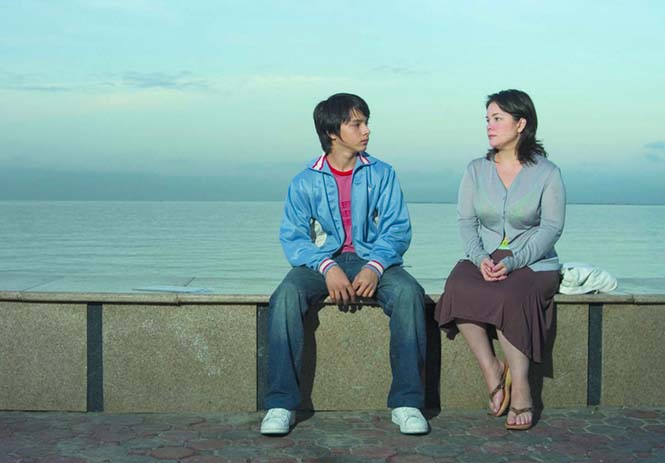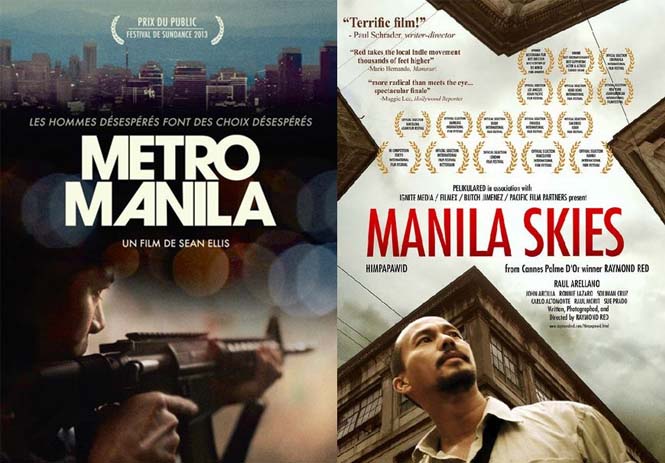A short review of the digitally restored Maynila sa Mga Kuko ng Liwanag
By Terence Krishna V. Lopez
In the successful Philippine premiere of the digitally restored Maynila sa Mga Kuko ng Liwanag last month at UP Cine Adarna, the attendance was an evidence that this movie remains well- loved as it should be. In May this year, the restored version had its world premiere at the most prestigious Cannes Film Festival under the Cannes Classics section.
Amid the powerful cinematography of one of the country’s best auteurs Mike De Leon (Sister Stella L., Batch ’81, Kisapmata, Kung Mangarap ka at Magising, Bayaning Third World), Lino Brocka’s fearless adaptation of the brilliant Edgardo Reyes novel made the 1975 classic Maynila Sa Mga Kuko ng Liwanag one of the greatest Asian films of all time.
To underscore Brockas’s fearlessness- the movie was made in the height of the Martial Law years, when aside from the human rights violations in the provinces and cities, Manila was being painted as a beautiful, dreamy city. It was a time when the government consciously hid the poverty and other social injustices in the metro- which was precisely the things this movie bravely showed. It was 1970s and yet- we all know- so many of these injustices remain. Poverty of course is even worse. This makes this film as relevant now as it was back then.
This fearlessness of course will only be matched by his Cory Aquino regime’s human rights situation masterpiece Orapronobis.
Watching the digitally restored version of the film, sends chills to the bones. For those who haven’t seen it before the restoration, it is a discovery of one cinematic gem, for us who have seen it before it was restored- it reminds us once again of how brilliant Lino Brocka was. It reminds us of how he was able to marry form and content-like in many of his films – and what a marriage! It is kind of perfect.
 The heart of Maynila lies on its narrative, in the center of it is Julio Madiaga (played by a gorgeous young Bembol Rocco) – a naive provincial lad who was determined to do everything to find the love of his life, Ligaya Paraiso (played by one of Brocka’s favorite muses, Hilda Koronel) in the concrete jungles of Manila. He waited painstakingly, on the corner of Misericordia street, and when he was not standing on that corner- he was taking jobs he can to survive waiting. Of course, the jobs he finds cannot make him survive. Did he have a choice? Yes he had- but it depends on how one looks at a choice and how one can stomach such choices. Brocka knew how to present these choices-without passing judgment. After all, who are we to judge?
The heart of Maynila lies on its narrative, in the center of it is Julio Madiaga (played by a gorgeous young Bembol Rocco) – a naive provincial lad who was determined to do everything to find the love of his life, Ligaya Paraiso (played by one of Brocka’s favorite muses, Hilda Koronel) in the concrete jungles of Manila. He waited painstakingly, on the corner of Misericordia street, and when he was not standing on that corner- he was taking jobs he can to survive waiting. Of course, the jobs he finds cannot make him survive. Did he have a choice? Yes he had- but it depends on how one looks at a choice and how one can stomach such choices. Brocka knew how to present these choices-without passing judgment. After all, who are we to judge?
In his quest, he witnesses injustices – towards the people he barely knew, towards the people he came to know and love and yes towards him.
The young Bembol Roco (then Rafael Roco Jr.) was perfect as Julio. Like Julio, Roco exudes innocence, purity, simplicity, anguish and anger. Who would forget that face at the end of the movie? Roco was epic and definitely, this is his best work- bar none.
Ligaya Paraiso, on the other hand, is no longer the innocent provincial lass bound to be a successful young woman in the capital. She did not become what her mother thought she would become. She did not become what she was promised of. Instead, she became like many other girls- swallowed, eaten alive by the darkness that is the city of dreams and hopes. She disappears in the belly of Manila.
What is so special about Hilda Koronel is that she exudes so much beauty and class and taste even in movies like this, when her character is far, so far from being classy and yet she gets away with it and manages to give us an extraordinary performance.
Did Julio find Ligaya? Yes. And in an instant after finding her- we are transported to one of the most unforgettable scenes in the movie- Ligaya breaking down, Julio calm and composed saying the lines that will eventually lead to the end of the story- their story, the city’s story- and like Ligaya, Julio is eaten alive by Manila.
For its finale, Lino Brocka uses another one of his magic tricks- it doesn’t really matter anymore what happened to Ligaya or Julio as individuals- in the end, Brocka makes his audience think and see beyond the individual characters in the story. After that powerful ending, Julio Madiaga becomes us. Ligaya Paraiso becomes us. Ah Tek becomes us. We become the mob. Brocka yet again successfully transcended his characters- they become humans more than just movie characters and this is something that many filmmakers today are so unsuccessful of.
*The digital restoration was completed in May 2013, through the help of Martin Scorsese’s World Cinema Foundation, the Film Development Council of the Philippines, and under the guidance of Mike de Leon, the movie’s producer and director of photography.























































































